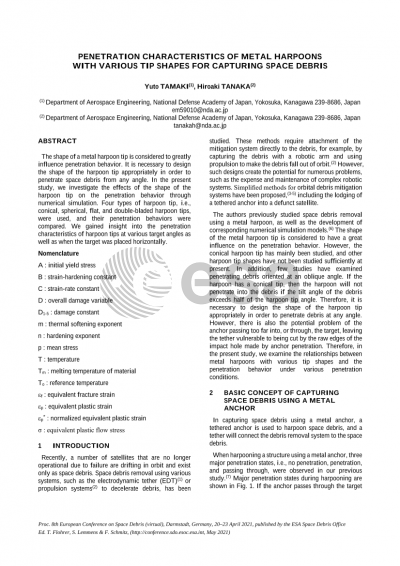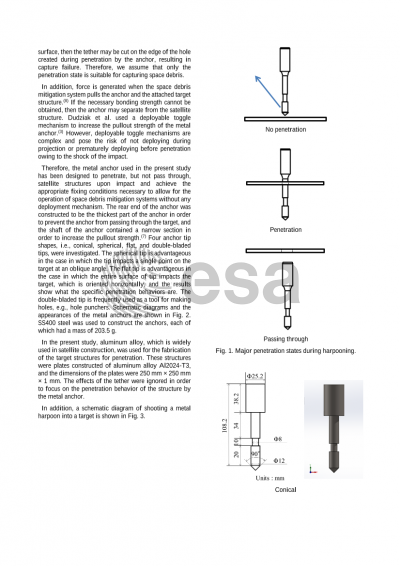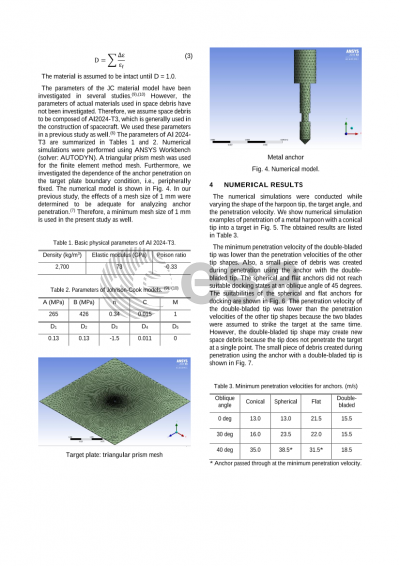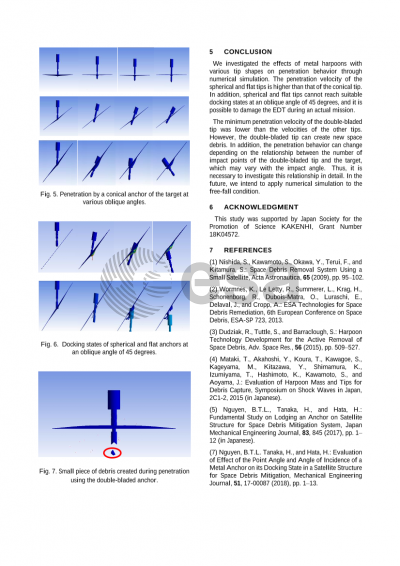Document details

Abstract
Active debris removal (ADR) using conductive tethers and propulsion systems has been studied by many researchers, and various methods have been proposed and studied to attach the removal system to debris.
The authors also studied the method to attach to the space debris using a metal harpoon, and conducted tests to shoot into a fixed target simulating a part of the large debris and unbound targets simulating a small debris which falls freely, as well as developing corresponding numerical simulation models. The shape of the metal harpoon tips is considered to have a great influence on the penetration behavior. However, the conical shape of the harpoon tip has been mainly studied and the other shapes of harpoon tips have not been studied sufficiently at present. If the harpoon has a conical shape tip, the harpoon will not penetrate to the debris if the tilt angle of the debris is bigger than the half of the harpoon tip angle. Therefore, it is necessary to achieve the shape of the harpoon tip which is easy to penetrate the debris at any angle. In addition, the debris in orbit are in various orientations, so the study on projection to rotating debris should be carried out.
In this study, we investigated the effects of the shapes of harpoon tips on the penetration behavior using numerical simulation. In these numerical simulations, we employed the Johnson-Cook model which has been used in many studies to evaluate impact and penetration problems. The numerical simulations were repeated while changing the shapes of the harpoon tips, target angles, and penetration velocities. The shape of the harpoon tip should be properly designed. Some types of harpoon tips, double-bladed, sphere, square and conical, were employed and their penetration behaviors were compared. By investigating the penetration behaviors with various shapes of harpoon tips through numerical simulations, we gained insight into the penetration characteristics of the harpoon tips at each target angles, as well as when the targets were placed horizontally. For example, when the harpoon is shooting into fixed targets the penetration velocity of the double-bladed harpoon tip to targets was lower than that of the conical shape except for the target being perfectly horizon. However, the penetration hole of the double-bladed harpoon tip was punched in a circle shape, so it resulted in a creation of new debris, while that of conical shape was punched in the shape of petal so it didn’t generate new debris.
Preview







